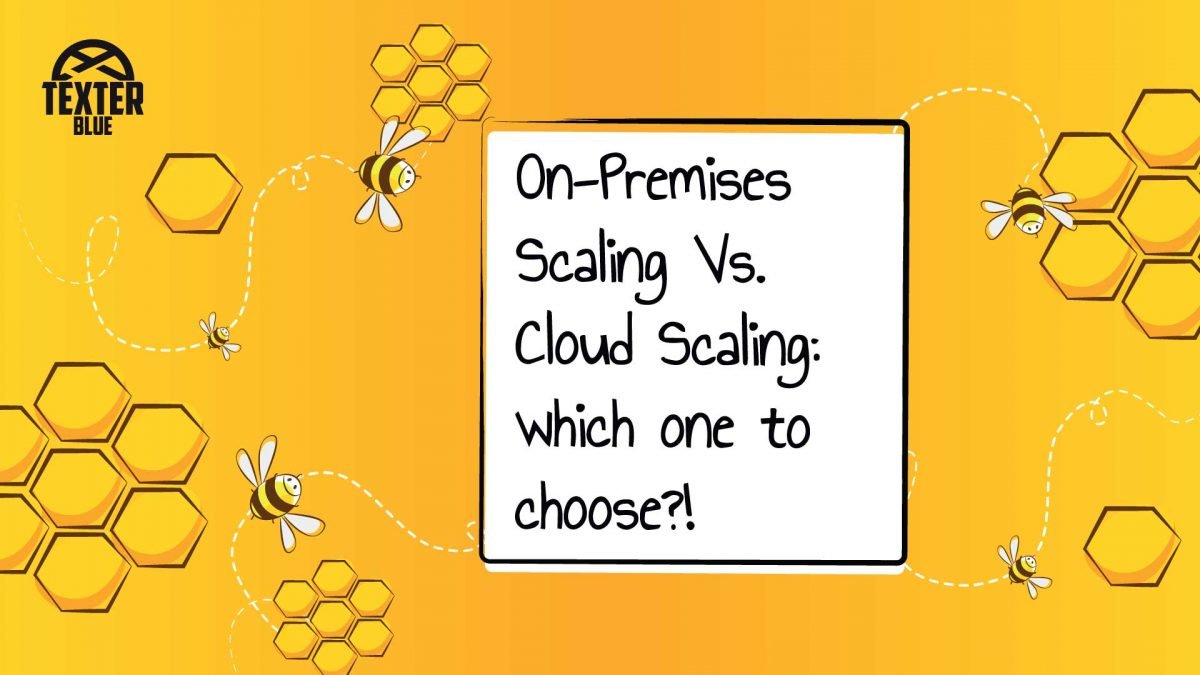Previously we’ve written about Horizontal vs Vertical Scaling. Today, we’ll delve into on-premises vs cloud scaling and what it means for your business.
Many businesses have adopted cloud solutions for their systems. Online services demands can fluctuate in uncontrollable ways. The inability to meet the demands might be the reason for customers to choose a competitor over you. The question is: “how this issue can be mitigated in a cost-effective way?” – There are two options: On-premises; and cloud scaling solutions! Let’s compare…
What is Scalability?
Simply put, it’s the ability to “scale” our resources in a way that meets the business and customers’ demands. It can either be Horizontal or Vertical, depending on what kind of resources need to be “scaled”. Be sure to read our latest article…
On-Premises Scaling Vs. Cloud Scaling: What’s the biggest difference?
As we’ve wrote before, on-premises scaling can be either on the software side or on the hardware side. It all depends on the resources needed, and the needs of your IT admins.
With a cloud scaling option, your cloud service provider handles all your needs. Not only that, but some providers even include automatic scaling in their services, so that you don’t have to worry about it at all. Resources can be increased and decreased either at your request or automatically. This end up helping you to minimize costs by not having to invest in added resources that might end up not being used at their full potential.
With this, you can take advantage of the resources already made available by the providers in a more controlled way.
On-Premises Scaling Vs. Cloud Scaling: What’s the investment associated?
A lot of the times, it might prove difficult to determine the cloud scaling costs, but most cloud service providers will be able to help you better understand all costs involved and if auto-scaling is the best option for you.
Horizontal and vertical cloud scaling: Which one to choose?
Just like in on-premises scaling, there are many similarities between horizontal and vertical scaling, but there are also key differences between both, with each one having its advantages and disadvantages. So, how do you choose? You must consider the type of service you provide, its technical requirements and goals, and understand the value added by scaling either way.
Here are some key differences between horizontal and vertical cloud scaling:
Performance
Horizontal Scaling – Horizontal scaling uses the power of multiple physical machines. This allocates processing and storage tasks across physical machines connected by a single network.
Vertical Scaling – Vertical scaling leverages concurrent programming on a single physical machine. This machine may have multiple cores. The data processing and storage capacity of the machine can be optimized through hardware upgrades.
Data Transmission
Horizontal Scaling – Horizontal scaling transmits data between machines using network communication, also known as ‘calls’. These calls can be slow and are likely to fail, especially in un-optimized scaling environments. Data processing in non-optimal horizontal scaling environments often translates to different machines processing different requests. This can lead to outdated data being transmitted.
Vertical Scaling – Vertical scaling operates on the principle of inter-process communication. This scalability method is much faster and more straightforward. As scaling up involves a single machine for processing all requests, the issue of ‘data inconsistency’ does not exist.
Downtime
Horizontal Scaling – Downtime is rare in an environment sustained by horizontal scaling. This is because multiple machines exist to process requests at the same time. In case some machines stop functioning, others will take up their workload.
Vertical Scaling – An environment that relies on vertical scaling is more susceptible to downtime. This is because all workloads are processed on a single machine. No matter how robust the capacity of this machine, any problems in its operations might introduce the risk of downtime.
Welcome to Hive! A platform that allows horizontal scaling for Alfresco systems
It’s a known fact that managing multiple smaller environments is more performant than having one large environment. Forget about those sleepless nights trying to rebuild your statistics or defragment your indexes. By replacing one big repository with several smaller ones, the HIVE can make Large Environments more responsive while spending less money. The HIVE allows the handling of zillions of documents, reducing some known problems on large Alfresco deployments.
And the best?! All processes happen in the backend. So, the user will always view it as a Single Big Repository. Compatible with all existing Alfresco clients including Share, ACA, ADW and REST API. The Hive head is the single point of entry so it can be seen as any standalone Alfresco server.
Download HIVE e-book! If you’re struggling with your digital transformation, remember… you are not alone in this… Texter Blue is here to help you providing the best results! Make sure you read our news and articles and contact us.

